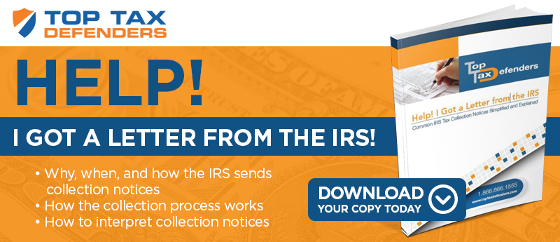
When you owe the IRS money, you put yourself at risk of having your bank account levied. A bank levy can invite financial hardship into your life and make paying everyday bills more difficult. However, you do have options for avoiding or removing an IRS bank levy.
What is an IRS Bank Levy?
An IRS bank levy allows the IRS to freeze all of your assets and drain your bank account in a bid to recoup money that you owe the federal government. Once a levy is put on your bank account, you have a window of about three weeks before all of the money is removed from it and given to the IRS.
The levy will remain in place until your IRS debt is paid in full. Before the IRS can levy your bank account, however, it must notify you of its intent to do so within 30 days. This small time frame gives you an opportunity to avoid a bank levy and the financial distress that can come with it.
Avoiding an IRS Bank Levy
When you receive the IRS' letter in the mail warning of you of an impending bank levy, it is important that you do not disregard that notification. It will be your only opportunity to discover what your payment options are and how to avoid your bank account being levied and frozen by the IRS.
After you receive the letter, you can request a hearing at your local IRS office. During the hearing, you can present your argument about why your bank account should not be levied and why this move could put you in financial straits.
During the hearing, you can also request an additional 30 days to work out some type of arrangement to pay off your debt or otherwise settle your account. You can have a tax professional representing and speaking on your behalf during the IRS hearing.
How to Remove an IRS Bank Levy
Once the levy is in place, it can be difficult to remove. Nonetheless, one option you have would be to write the IRS a letter explaining why the levy is creating financial hardships for you and your household.
The letter should contain more than just a written plea asking for the levy to be lifted. It should also include written proof of your financial hardships such as not having enough money to pay rent or cover other basic expenses for you and your family.
A tax professional can assist you in writing this letter asking for the levy to be removed. You can ask the IRS to consider other arrangements that would allow you to pay off what you owe and otherwise have the levy lifted from your bank account.
Demonstrate That the Levy Will Cause a Financial Hardship
You may be surprised to learn that the IRS can be sympathetic to taxpayers who would experience a genuine financial hardship if their bank accounts were levied. To demonstrate true hardship, however, you must prove that you either barely make enough money to cover basic expenses or your income currently leaves you short on meeting these costs each month.
Some of the basic expenses that might not be covered if your bank account were to be levied include:
- mortgage or rent
- groceries
- utilities
- medical costs
Other expenses like payments for credit cards or student loans generally are not considered when the IRS decides whether or not a levy would create a financial hardship for you.
Options for How to Release an IRS Bank Levy
One of the options that might be available to you to get the levy released or to avoid it altogether involves asking for an installment agreement. This agreement lets you pay off what you owe in monthly increments. The amount of money you pay each month will be based on your income as well as what assets you have that could be liquidated if necessary.
The IRS generally sets up the arrangement to be affordable so you avoid defaulting on it. As long as you make the payments on time each month, you could avoid having your bank account levied. If you miss payments, however, the IRS may continue with its decision to levy your account and freeze your assets until your debt is paid in full.
Offer a Lump Sum Payment
If you have the financial means to do so, you should offer the IRS a lump sum payment to pay off most of what you owe and close your account altogether. In most instances, the IRS asks for at least 80 percent of what you owe if you want to use this option to avoid a bank levy.
However, even if you cannot afford to pay 80 percent of your debt, you can still make an offer of at least 60 or 70 percent of the total debt. In many cases, the IRS will accept this offer, thereby allowing you to avoid having your bank account levied and your assets frozen.
You should make this lump sum offer within 30 days after receiving the IRS' Intent to Levy letter in the mail. If you are hesitant to approach the IRS on your own or you are unsure of how to make this offer, you should hire a tax professional who can make the lump sum offer on your behalf.
Hiring a Tax Professional
Avoiding a bank levy or having one removed can be a difficult process if you attempt to go through it by yourself. You may have no idea what the IRS tax codes are for bank levies or what your rights as a taxpayer are during your case.
Rather than risk a financial hardship and having all of your money drained from your account, you may be able to avoid a levy entirely by having a tax professional working for you. Your tax pro will know the IRS code and what options might work in your best interests to have the levy released and to settle your debt with the IRS.




